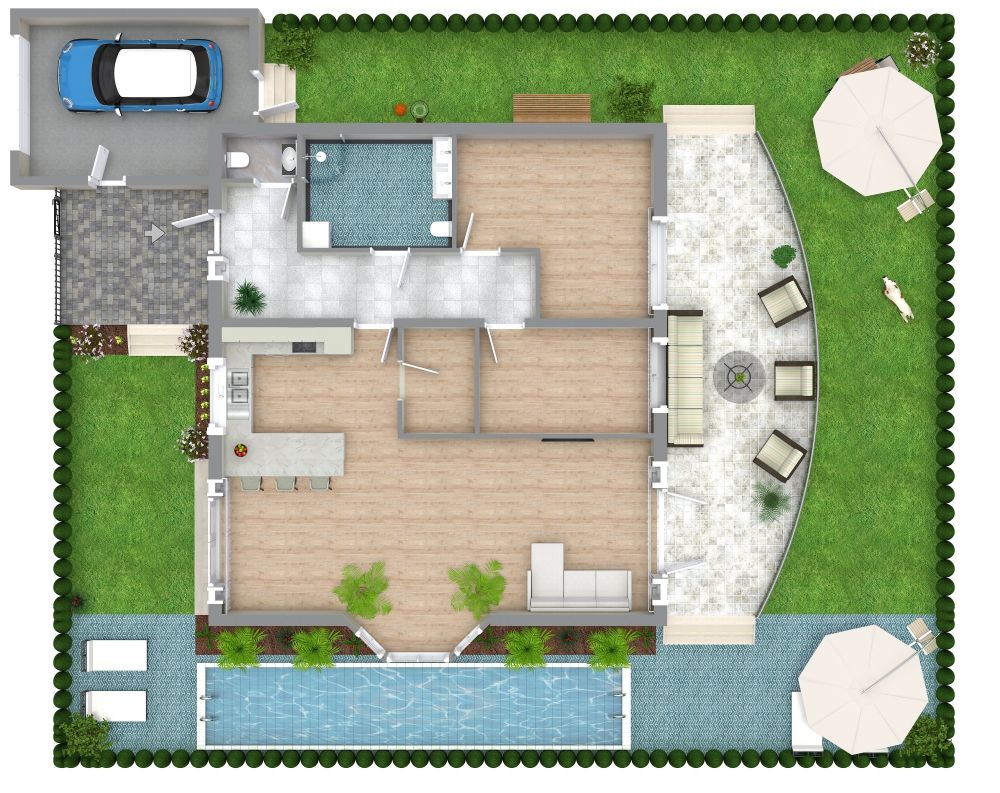Site Plan Examples
A site plan, or plot plan, is a drawing of a parcel of land, showing property lines, buildings, plants (such as large trees), and other fixed outdoor structures such as driveways, swimming pools, patios, and fencing. Site plans should be drawn to scale, with dimensions clearly labeled. They can be in color or black and white and can be displayed in 2D or 3D. A site plan also usually includes the property address, the North cardinal direction, and the scale.
Read More
Site plans are useful in many scenarios. One of the most common uses is to map out existing property elements and how they relate to proposed improvements. A site plan can also show a brand new site design, for example, for the blank property around a new home. Some property owners want a site plan just to keep for reference, to document what is on their property and where the property lines are.
A site plan is different from a floor plan. A floor plan shows the layout of a building and the relationship between the various rooms. Whereas a site plan shows the layout of everything within a property's boundary lines.
If you plan to create a site plan yourself, here are some of the key elements to measure and add to your site plan.
Property boundary lines
To create a site plan, you’ll usually start by drawing up the property boundary lines, which mark the perimeter of a piece of land. The boundary may be marked by a fence, by property pins at each corner, or the boundary may be unmarked. However, the boundary is part of a property's legal description. If you aren’t sure of its location, you can find it by contacting the appropriate government zoning department in your area. There are also apps that help you locate property lines by accessing property records.
Buildings and structures
Next, add any existing buildings and structures. These could include a house, freestanding garage, cottage, shed, or pool house. Be sure to include any decks, and built-in shade structures, such as pergolas, gazebos, and pavilions. Remember to measure and add the dimensions to the site plan.
Driveways, parking areas, and walkways
Draw existing driveways and other cement structures such as additional parking areas, patios, or playground areas. Next, add any existing paths or walkways.
Trees and Plants
It’s usually easiest to start by showing the location of large expanses of grass or lawn. Next, add significant trees - generally those larger than 2 ft (.6 m) in diameter. Depending on the use for your site plan, you may add other plants, if desired, as well as labels showing the types or species.
Irrigation and utilities
Finally, you can show the location of any existing irrigation and utilities on the property.
Once you’ve drawn up a site plan of what is existing on your property, it’s a good idea to save it for reference. Then, if needed, you can create an updated site plan that shows planned improvements - what will stay, what will be removed, and what will be added. On the updated site plan, consider using a different type or color of line to show what is proposed vs existing.
Note that prior to implementing major improvements, you may need to review your site plan with your local building department. Certain changes, such as adding or removing a structure or swimming pool, can require building department approval and may require a site plan as part of the process. Depending on your area, you may be able to provide a site plan that you have created yourself, or your building department may require one created by a professional.
Whatever your site plan needs are, the process of creating one will give you a really good understanding of your property and provide you with a useful reference document for the future.